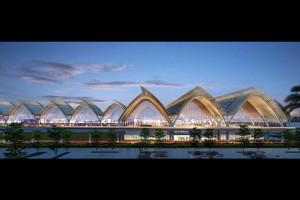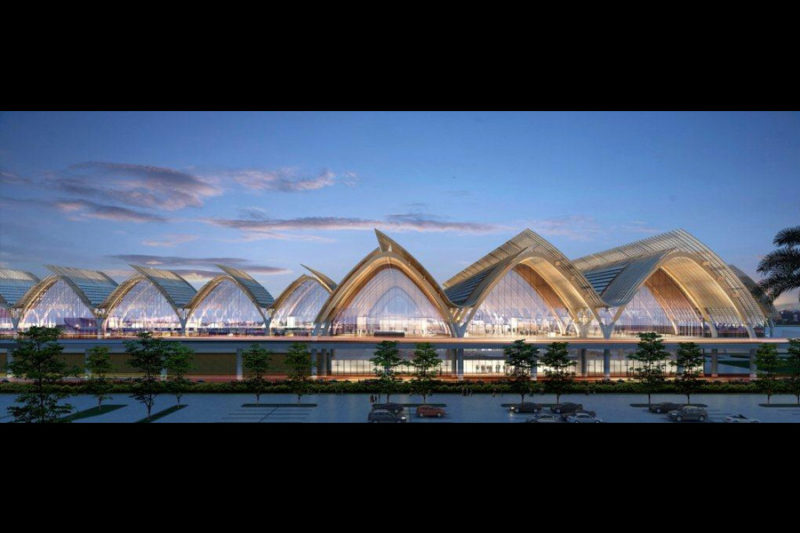 Construction work to transform Mactan-Cebu International Airport (MCIA), the country’s second biggest gateway, into the world’s first resort airport has officially started, with President Benigno Aquino III leading ground-breaking ceremonies.
Construction work to transform Mactan-Cebu International Airport (MCIA), the country’s second biggest gateway, into the world’s first resort airport has officially started, with President Benigno Aquino III leading ground-breaking ceremonies.
The Department of Transportation and Communications (DOTC), together with concessionaire GMR-Megawide Cebu Airport Corporation (GMCAC), held on June 29 ground-breaking rites for the Aquino Administration’s first airport under a public-private partnership (PPP).
Transport Secretary Joseph Emilio Abaya said the project will not only cement the country’s place on the global map as a major tourist and business destination, “it will boost the local economy and is projected to generate jobs especially in Cebu.”
The project, which is envisioned by GMR-Megawide to be the first resort airport in the world, involves the construction of a new world-class international passenger terminal building (PTB), as well as the renovation of the existing PTB and its conversion into an exclusively domestic facility.
The new PTB will be completed in three years’ time, or by 2018, while renovation of the existing terminal is slated for completion in 2019.
During the ground-breaking rites, the President said the project includes construction of additional 20 aircraft parking stands with aerobridge, 13 bus parking stands, and over 550 private vehicle parking stands.
A link-bridge that will connect the domestic and international terminals will also be constructed. Check-in counters for both domestic and international flights will be increased to 149 from the current 49.
Aquino noted that when the project is completed in 2019, the airport will boast larger space and faster operations. Moreover, annual passenger volume will be increased to 15 million passengers, up 233% from the current 4.5 million.
GMCAC won the auction for the 25-year PPP contract last year with a premium bid of P14.4 billion. Operations and maintenance (O&M) of the airport was turned over to the consortium in November 2014.
Immediately upon assuming O&M responsibility, GMCAC began implementing “soft improvements,” or minor civil works, in the existing terminal to enhance passenger experience at the gateway.
For one, a centralized security check (CSC) system was opened earlier this month to speed up processing time for departing guests. The CSC features four X-ray machines that can be used interchangeably, doubling capacity of the final check-in counters.
For another, to further reduce passenger queues, GMCAC opened additional immigration counters and self-service kiosks where passengers can pre-check in.
Other soft improvements included installing LED bulbs for brighter lighting; better use of floor space, which included transferring certain offices in exchange for more check-in counters and waiting areas; and redesigning seating patterns to increase usage by passengers.
“It is clear to us that GMCAC brings international expertise into running an airport. Immediately it has already made substantial improvements without making structural works yet. What it will do now that we are breaking ground is exciting for us, and especially for travelers to and from Cebu,” Abaya remarked.
Puerto Princesa airport
Meanwhile, Aquino inspected on the same day construction of the new international airport in Puerto Princesa, one of his administration’s main infrastructure projects to boost tourism.
The P3.6-billion development of the Puerto Princesa International Airport is targeted for completion in early 2027.
Korean group Kumho Industrial Co. Ltd., awarded with the task to upgrade the airport, said development is 30% of target.
Once complete, the facility will have an annual capacity of 2 million passengers, much bigger than the domestic airport’s current capacity of 350,000 passengers a year.
The project involves expanding and improving the existing runaway and related facilities, including building a new passenger terminal and air traffic control tower.





